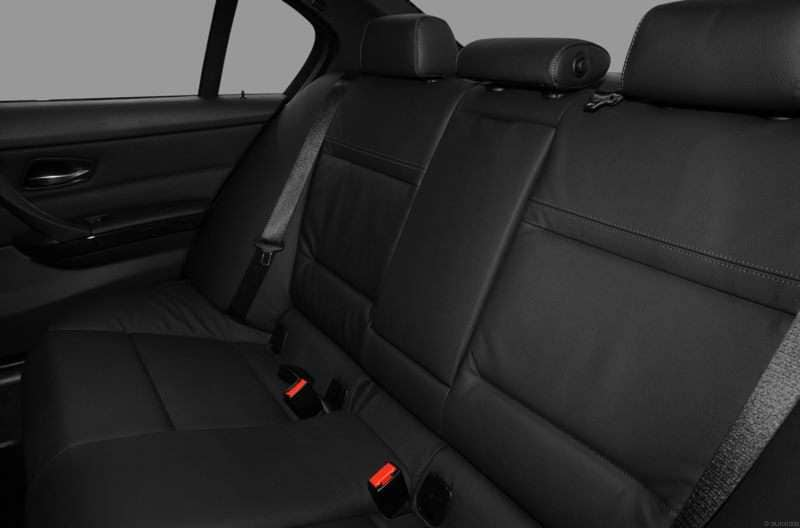Recent Articles
Popular Makes
Body Types
10 Things You Should Know About the 2010 BMW 335d
Clean, unadulterated performance from diesel technology
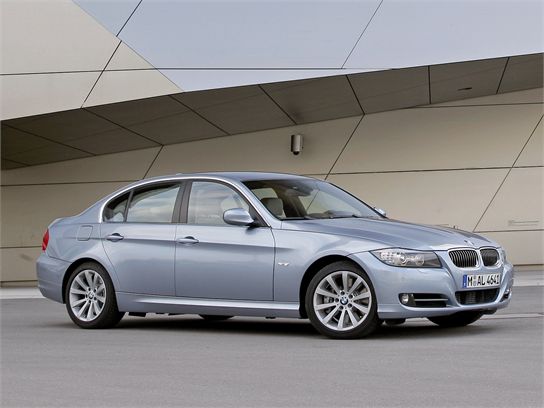
In the world of cars, there are some things that you just don’t do. Engineering a four-cylinder Corvette or affixing a RAM badge to an F-150 just shouldn't be done. They’re acts of sacrilege, much like placing a diesel engine in the most popular sport sedan in the land, the BMW 3 Series. On the surface, not only would news of such a blasphemous deed have brand loyalists burning rubber to their nearest houses of worship, it would also appear to be the baddest of all bad ideas.
And then you drive one. Armageddon is rescheduled, and all seems right with the universe again. Better than right actually, as the 2010 BMW 335d proves that ultimate driving and noteworthy – and clean – fuel efficiency can come together in one helluva four-wheeled experience.
#10. BMW’s 335d is 50-state emissions compliant…thanks, in part, to urea.
Despite tremendous advances in technology, a stigma lingers over the term “diesel.” Truth be told, today’s diesels are cleaner than they’ve ever been, so much in fact that they meet the same air-quality standards set for gasoline-powered vehicles. Because of that, they can now be sold in all 50 U.S. states. In the case of the 2010 BMW 335d, the turbocharged diesel engine’s exhaust is treated with a urea-based AdBlue solution that neutralizes noxious gases. Pair that with the government-mandated use of ultra low sulfur diesel (ULSD) fuel, and you have a modern diesel without the foul, smoky tailpipe emissions associated with models of the past.
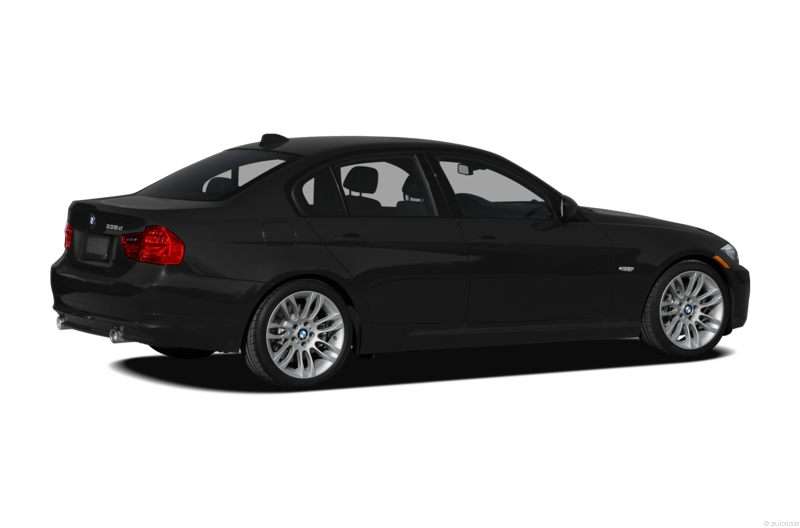
#9. Think diesels like the BMW 335d are sluggish? Think again.
Clean diesel technology is all well and good, but for BMW buyers, it doesn’t amount to a hill of beans if it sacrifices performance. Thankfully, that’s not the case, as the 2010 335d hustles nearly as well as its gas-powered 335i sibling: the 335i runs to 60 mph in 5.4 seconds, whereas the 335d hits that magical number in six seconds flat (both models equipped with an automatic transmission). That’s far better than your average car, but what really sells the 335d is the fuel economy that accompanies its brisk acceleration – 23 mpg city, 36 mpg highway, and 27 mpg overall. The 335i, by comparison, achieves 17 mpg city/26 mpg highway/20 mpg overall.
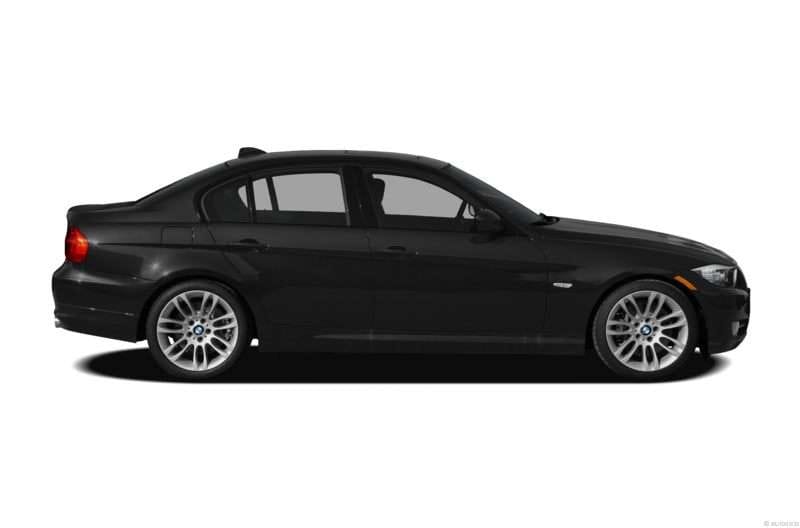
#8. Very little separates the BMW 335d from other 3 Series models.
Aside from an assuming badge, it’s hard to distinguish a diesel-powered BMW 335d from the more mainstream gas-powered 335i variant. Look beyond that subtle difference and you’ll find that the 335d comes standard with the 335i’s optional six-speed automatic transmission and weighs about 230 pounds more.
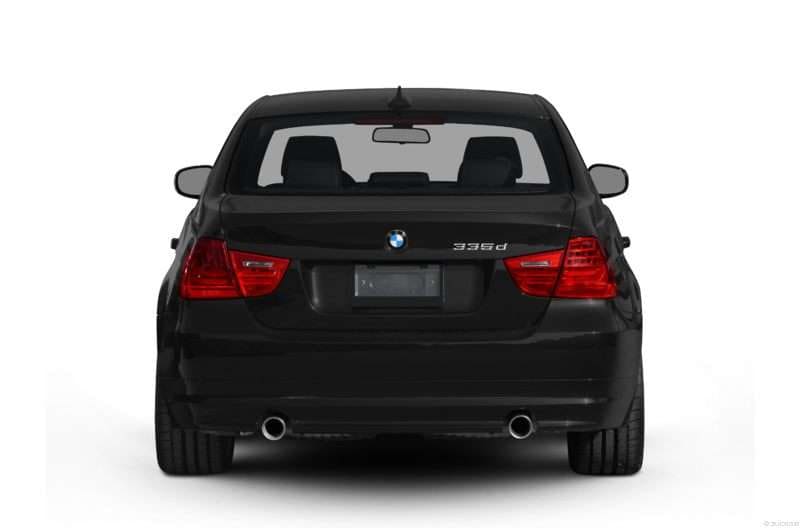
#7. For most drivers, the 335d will pay for itself within two years.
Consider the 2010 BMW 335d’s base price of $44,725 and you might be wondering if it’s worth a $3,600 jump over the 335i. Even when factoring in an available diesel tax credit, you’re still talking about a $2,700 gap, though the 335d does come standard with an automatic transmission instead of the 335i’s manual. But dig deeper into the numbers and you’ll see that the 335d balances the books in fewer than 23,000 miles, which for many drivers, is traveled in less than two years. Based on current prices of $2.74/gallon for diesel and $2.85/gallon for premium unleaded, the 27-mpg (overall) 335d requires $0.10 of fuel for every mile traveled, whereas the 20-mpg 335i requires $0.22 of high-octane fuel per mile. That’s a $0.12 per mile savings for the 335d, which offsets any base price disadvantage in 22,500 miles. Balance things out by adding a $1,325 automatic tranny to the 335i, and you’re at a wash within 13,125 miles.
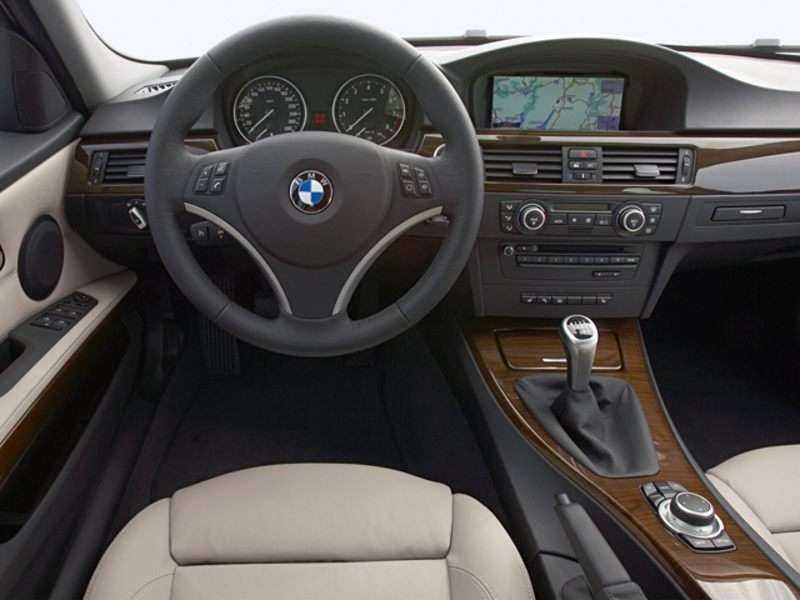
#6. Like all BMWs, the 335d comes with a free-maintenance program.
Through the years, many manufacturers have toyed with offering free-maintenance programs. BMW is one of the few manufacturers that have actually continued with the program. Buyers of the 2010 335d will benefit from the BMW Ultimate Service plan, which spans the first four years or 50,000 miles of ownership, and covers all scheduled maintenance during that time period. Free services include not only oil changes and routine inspections, but also brake and wiper blade replacements (if necessary) and refills of the 335d’s AdBlue exhaust-cleansing solution.
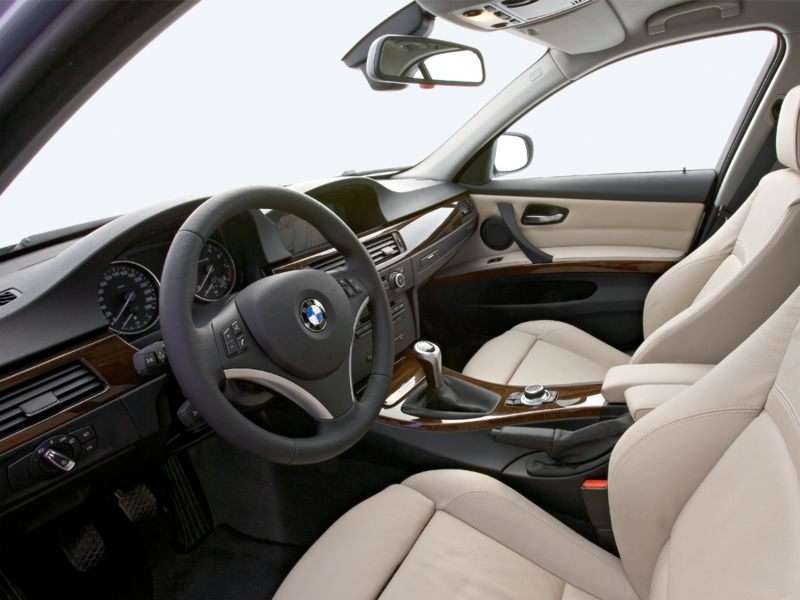
#5. All-new in 2009, the BMW 335d offers very few changes for 2010.
Since it was introduced just last year, BMW tweaked the 335d very little for 2010, even leaving the base price at $44,725. Unlike the 2009 model, an HD radio feature is now standard, utilizing digital broadcast signals to deliver richer sound quality versus non-HD systems. Also new on the 2010 BMW 335d are automatic high-beam headlights. Employing a sensor located on the interior rearview mirror, this technology adjusts your headlights to low or high beams based on your proximity to other vehicles, oncoming traffic, and ambient light.
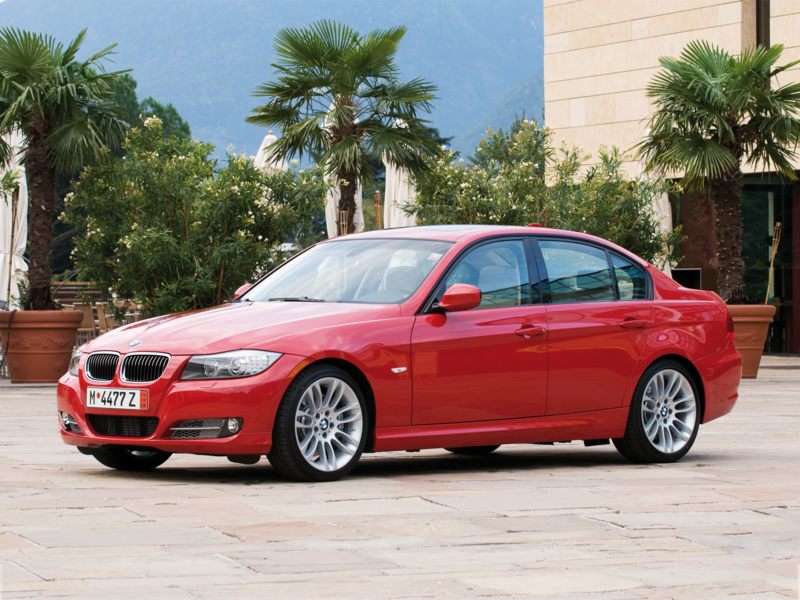
Photo by BMW
#4. BMW’s 335d is this country’s most fuel-efficient luxury sport sedan.
When it comes to top-rated fuel-efficiency from currently-available mass-market passenger cars, there’s no topping the Toyota Prius. But that car, like its corporate cousin the Lexus HS 250h, doesn’t exactly deliver the driving excitement one would expect from a BMW. Another Lexus, the GS 450h hybrid, is an impressive ride in its own right, but doesn’t match the 335d’s fuel economy figures, and specs for the upcoming Mercedes-Benz E350 Bluetec have not been officially announced. In terms of luxury sport sedans available in the U.S., the diesel-powered Bimmer is top-dog on the miles-per-gallon front.
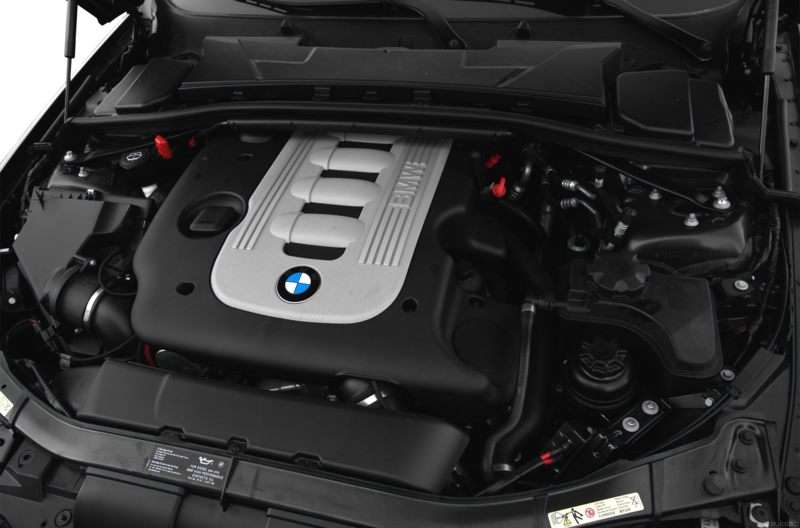
#3. From behind the wheel, the 335d is every bit a BMW.
BMW is well-known for producing a silky-smooth inline six-cylinder engine, one that’s immensely powerful when stuffed with air from twin turbochargers. That’s what you get with the gasoline-fed 335i, and the feeling is no less intoxicating with the diesel-powered 335d and its 265 horses and 425 lb.-ft. of torque (available at 1,750 rpm). With those stats, it’s no surprise that this mill pulls extraordinarily strong, whether you’re rolling from a stop sign or accelerating for a pass at 80 mph on the freeway. There’s a hint of traditional diesel clatter, but the noise is well muted; nail the throttle and the 335d sounds much like its 335i counterpart. Best of all, we recorded 29.7 mpg after hundreds of lead-footed miles.
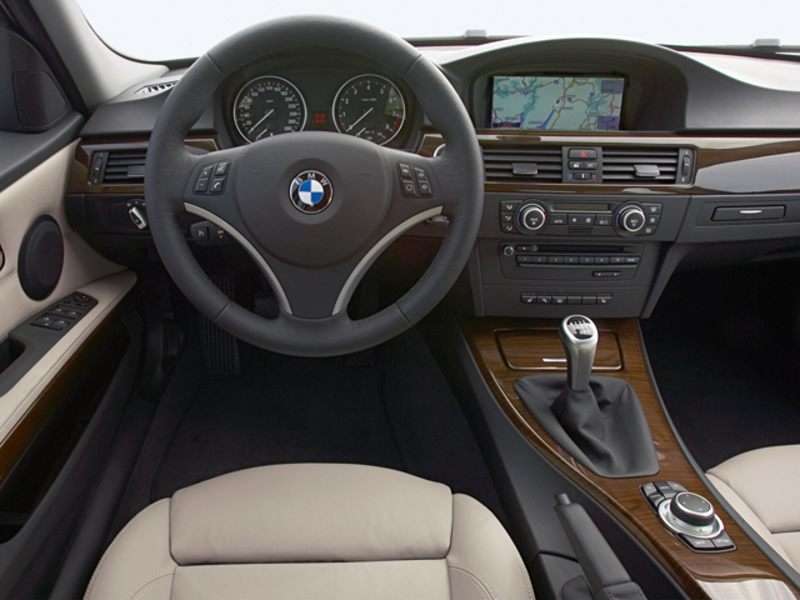
#2. Skip the Sport Package if you prefer comfort versus optimum handling.
While we enjoyed exploiting all that the 335d’s twin-turbocharged diesel engine had to offer, we were less enamored with our test car’s ride comfort. We spent a week in a model outfitted with the optional Sport Package, which includes a suspension system tuned for optimum handling. Indeed, our 335d delivered lots of road feel with steering response and cornering capabilities that few competitors can imitate without the use of all-wheel-drive systems. But with that comes a decidedly harsh ride that transfers every bump and road irregularity to the driver. This makes the Sport Package less than ideal for those who spend the majority of their time commuting.
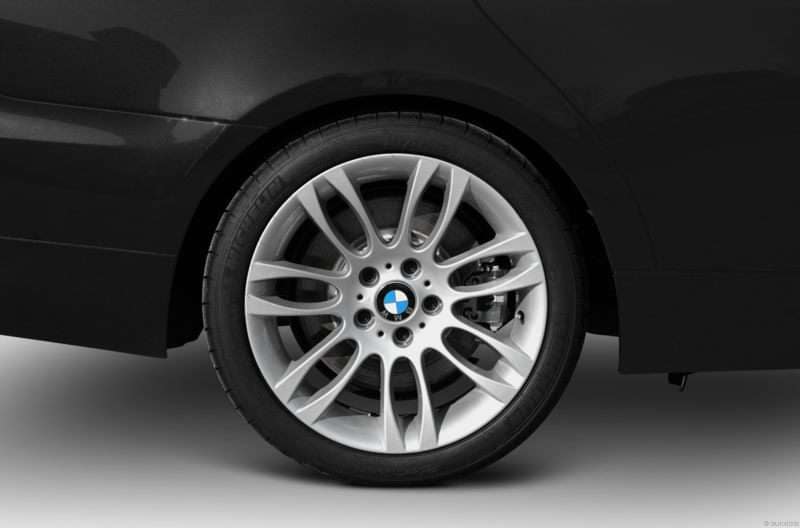
#1. Classified for five, but best used as a four-passenger sedan.
Based on the number of standard safety belts and head restraints, the 2010 BMW 335d is classified as a five-passenger sedan. However, if you have any concern for that fifth person, you’ll either keep the trip short or find them another ride. With a fold-down armrest up and locked, the center “hump” seat is quite uncomfortable, while the tall tunnel on the floor leaves little foot or leg room. Plus, the second-row seat is narrow. On the up side, two outboard passengers will enjoy ample foot and leg room, firm cushions set at a natural reclined position, and padded door sills and armrests.
